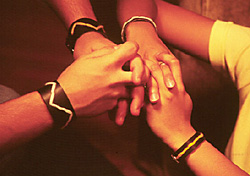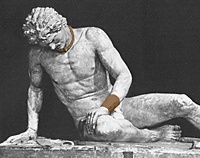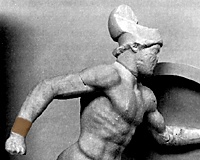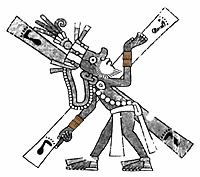
 |
Please write: dan@dancooper.tv
Return to Page One
Register here to receive Fashion Finds
email updates!
 |
 |
 Wristbands, particularly ones wrought in leather, are an ancient
accessory. Wristbands, particularly ones wrought in leather, are an ancient
accessory.
Depending on country, culture, religion or social class, a wristband revealed to the observer insights about the wearer. In ancient Egypt, wristbands were worn by slaves. Roman gladiators, Celtic kings, and Aztec priests wore them. Blacksmiths have worn them for centuries.
Most likely, the wristband’s creation was practical, not decorative. The band would keep the wrist from dislocating, protect the major artery in the wrist from being torn, strengthen the wearer performing a particular repetitive motion. The wristband’s practical purpose has never been lost; what has been gained through the ages is adornment. Maria Esztergalyos is a young New York City-based designer who makes leather and suede wristbands – wide rock & roll styles, medium width bands, and thin ones. Some have studs, eyelets, scalloped buckles, square buckles; others are left "rough," with the punched holes unprotected. I love the rough hewn look of these "just punched" bands; they are the ones that especially remind me of gladiator gear, of ancient garb. Maria made her first band in 1995. She calls it a "crazy glam watchband" in sparkling green. Maria fashioned it for a class project in a 3D art class. From that point on, Maria was bitten by the leather band bug, experimenting and expanding her knowledge. So we invited Yaniv and Cia to show you Maria's creations, in a fantasy of back-to-school premières amours. |
 S is for Sexy.
S is for Sexy. Going steady.
Going steady. Shine on.
Shine on.majland@hotmail.com.
For a list of stores, see page 3 of the article.
 Cat's cradle.
Cat's cradle.




